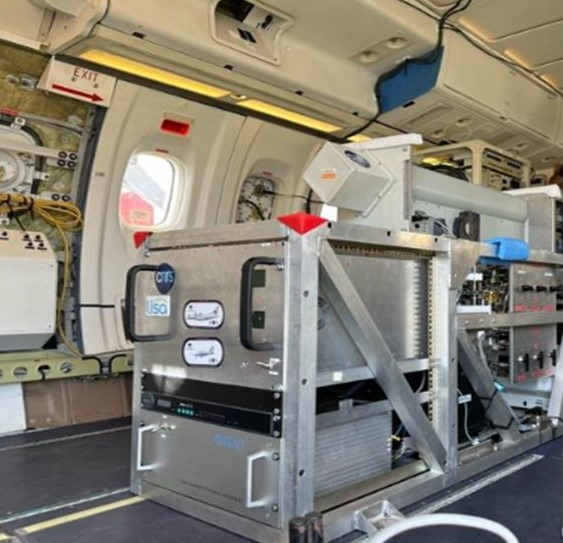A2S2 : New airborne instrument to measure the vertical atmospheric profile of aerosol absorption
Aerosols scatter and absorb solar radiation, with several consequences. By scattering, they reflect part of the sun's radiation back into space, causing local cooling of the atmosphere. Conversely, the absorption of solar radiation by aerosols leads to atmospheric warming. Aerosols thus impact both the water and carbon cycles.
Aerosols impact the radiation balance directly, but also indirectly by modifying the life cycle and properties of cloud systems, with consequences for the water cycle. The absorption properties of aerosols deposited on snow and ice increase the amount of radiation absorbed by these surfaces, accelerating their melting. Furthermore, depending on their absorption properties, aerosols affect the radiation available for photosynthesis, on which the primary productivity of ecosystems, and therefore the carbon cycle, depends.
The predominance of cooling or warming depends on the optical properties of aerosols, linked to their chemical composition. Absorption of solar radiation is primarily caused by sooty carbon aerosols, the second biggest contributor to global warming after greenhouse gases, but also by organic carbon and desert dust, which dominate absorption at short wavelengths (370-500 nm). The separation of total absorption by aerosols according to their chemical composition and vertical distribution, which induces a specific response from cloud cover (semi-direct effect), is therefore essential for reducing model and satellite uncertainties in estimating radiative forcing, as well as for establishing scientifically-based air quality control policies.
Thanks to funding from the CNRS-INSU medium-heavy program, the Laboratoire Inter-universitaire des Systèmes Atmosphériques (LISA), in collaboration with CNRM and Aerodyne, has developed a new airborne instrument based on the commercial CAPS-PMSSA sensor, to simultaneously measure the vertical profile of aerosol scattering and optical extinction at 450 and 630 nm, under ambient conditions. The instrument, named A2S2 (Aerosol Absorption Spectral Sizer), has been characterized in the laboratory to define airborne performance and operating conditions, in particular accuracy at low pressure and high measurement frequency, as well as particle size-dependent scattering corrective factors (truncation error).

The A2S2 instrument in LISA's AVIRAD airborne platform on Safire's ATR-42 during the ACROSS campaign. © Référence
The instrument is part of LISA's AVIRAD airborne platform. It was first operated on Safire's ATR-42 during the ACROSS campaign in the Paris region, in summer 2022, to study the properties of mixtures between anthropogenic and biogenic air masses.
A2S2 measurements have shown that, on a regional scale, the mean simple scattering albedo is 0.86 and 0.88 at 450 and 630 nm, respectively. This suggests a significant contribution from organic aerosols to absorption.

Vertical profile of simple scattering albedo at 450 nm during the ACROSS campaign. Aerosol absorption in the lower layers is slightly higher than in the free troposphere. © Référence
In summer 2023, the instrument was used during the AERO-HDF campaign in the Hauts de France region to study local pollution and prepare for the 3MI space mission. Looking ahead to 2026, A2S2 is part of the payload for the ANR-funded BACCOPA project, which will see ATR-42 in the Congo to study aerosols from forest fires and their impact on deep convection.
A full agenda for this instrument, which opens up new possibilities for studying the radiative effect of aerosols, and which, apart from airborne campaigns, may also be operated on the ground.
Laboratories involved:
CNRS Terre & Univers laboratories
- Laboratoire inter-universitaire des systèmes atmosphériques (LISA - EFLUVE) Tutelles : CNRS / Université Paris Cité / UPEC
- Centre national de recherches météorologiques (CNRM) Tutelles : CNRS / Météo-France
Others
- Aerodyne Research, Billerica, MA
- Safire (Service des Avions Français Instrumentés pour la Recherche en Environnement), Francazal, France
More infos:
ACROSS project: https://across.aeris-data.fr/
AERO-HDF project: https://www.loa.univ-lille.fr/article/a/campagne-AERO-HDF
BACCOPA project: https://anr.fr/Project-ANR-23-CE01-0013

